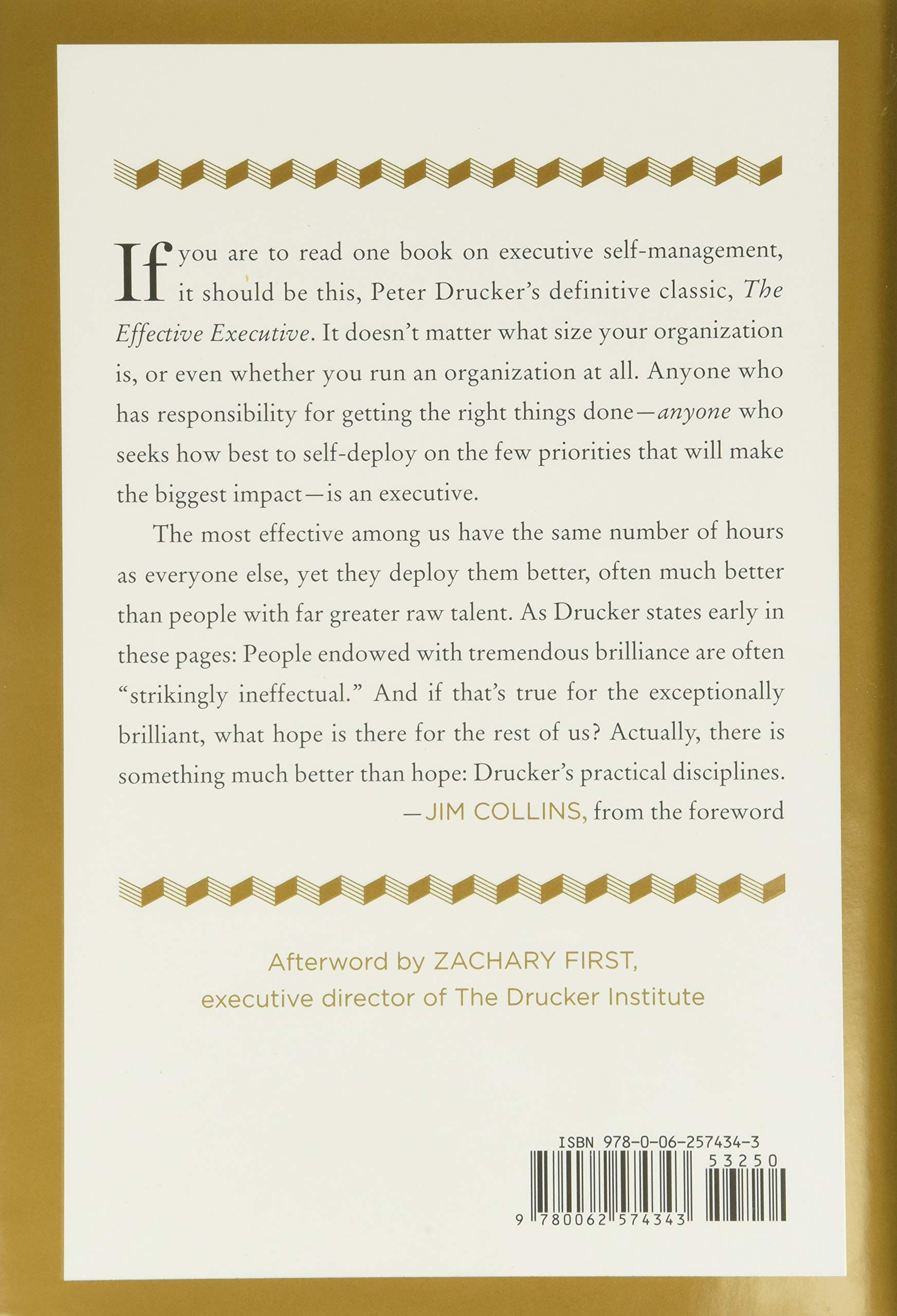Customer Services
Copyright © 2025 Desertcart Holdings Limited
Desert Online General Trading LLC
Dubai, United Arab Emirates





Full description not available
R**D
A Timeless Classic on Leadership and Execution 📘⌛
Peter Drucker's "The Effective Executive" is a seminal work that has stood the test of time, offering invaluable insights into the art of management and leadership. This commemorative hardcover edition, with a foreword by Jim Collins, pays tribute to Drucker's enduring legacy and the timeless wisdom contained within its pages. 🏆Pros:✅ Concise and Impactful: Drucker's writing is succinct yet profound, distilling complex concepts into actionable practices that resonate across industries and eras. 📝✅ Enduring Relevance: Despite being written decades ago, the principles outlined in this book remain remarkably relevant in today's fast-paced business world. 🌐✅ Practical Guidance: From managing time effectively to mobilizing strengths and setting priorities, Drucker provides a roadmap for executives to achieve genuine effectiveness. 🗺️Cons:❌ Dense at Times: While concise, certain sections may require careful re-reading and reflection to fully internalize the insights. 🤔❌ Historical Context: Some examples or references may feel dated, though the underlying principles remain evergreen. ⌛As someone who has read and re-read this book over the years, I can attest to its enduring value. Drucker's dissection of the executive's role and the habits essential for effectiveness is both enlightening and practical. 💡 His emphasis on "getting the right things done" and avoiding unproductive activities resonates deeply in our distraction-filled world.This commemorative edition is a beautiful tribute to a true management giant. Whether you're a seasoned executive or an aspiring leader, "The Effective Executive" is a must-read that will undoubtedly sharpen your focus, prioritization, and decision-making abilities. Drucker's wisdom transcends time, making this book an invaluable addition to any business library. 📚🌟
L**R
Masterful - Obligatory Reading!
Drucker is a Legend.This book is a masterful text which will guide you, as an executive of your life or business, to ask and develop answers to questions which will develop your skills and hone your usage of time into sharp relief.It is a book I will be coming back to regularly to ensure that I'm getting things right and to correct my perspective on them.Buy the book. You won't regret it. And there are plenty of cheaper options too.
A**R
Spoiled by the previous owner
Unfortunately, this book - which may be great - was spoiled for me by the actions of the previous owner, who took a bright pink felt pen and drew lines through many passages. I found this very annoying, so was unable to concentrate properly on the content.The star rating I have given is based on the views of very many people who have recommended it over the years, and the fact that I did feel that it contained many worthwhile insights.
D**Y
2nd to none
It is not a long book, but if you ever bother thinking about reading a business book, this is the one. It is not current, so some of the references to big industry are very dated, but the concept remains the same - good (excellent) executive performance is excellent executive performance. If this is not mandated reading in a business school - then it is not a business school.
P**T
Great book, quick delivery
Would buy again
B**X
Damaged state
Did not expect this.
T**T
Five Stars
The best book of its kind IMHO
L**L
Five Stars
A+
Trustpilot
2 weeks ago
1 month ago
2 months ago
2 weeks ago